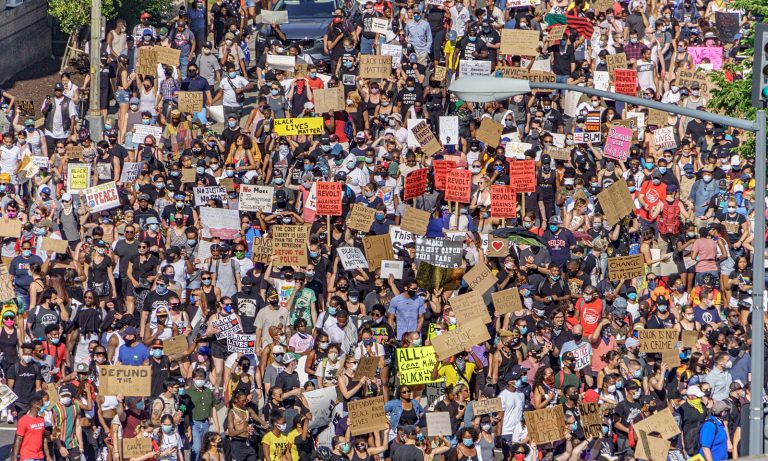Published on July 6, 2020

If protesters could plan a perfect stage to voice their grievances, it might look a lot like Athens, Greece. Its broad, yet not overly long, central boulevards are almost tailor-made for parading. Its large parliament-facing square, Syntagma, forms a natural focal point for marchers. With a warren of narrow streets surrounding the center, including the rebellious district of Exarcheia, it’s often remarkably easy for demonstrators to steal away if the going gets rough.
Los Angeles, by contrast, is a disaster for protesters. It has no wholly recognizable center, few walkable distances, and little in the way of protest-friendly space. As far as longtime city activists are concerned, just amassing small crowds can be an achievement. “There’s really just no place to go, the city is structured in a way that you’re in a city but you’re not in a city,” says David Adler, general coordinator at the Progressive International, a new global political group. “While a protest is the coming together of a large group of people and that’s just counter to the idea of L.A.”
Recent unrest across the United States has merely underscored that geographical significance, while also showcasing the ways in which unsatisfactory built environments can fuel ostensibly unrelated grievances. Cities with reduced or tightly regimented public spaces, like New York, have seen some of the fiercest clashes as police move to enforce curfews and other restrictions. Cities with few natural assembly points and massive sprawl, like Phoenix, have often prevented residents from congregating in consequential numbers at all. Boxed into largely sub-divided neighborhoods, cities with particularly pervasive enduring racial segregation, like Minneapolis, appear extra susceptible to protest in the first place.
“When you want to stage a protest, you have to identify a location, you have to think about access, and even how big it is,” says Jeff Hou, a professor of Landscape Architecture at the University of Washington and director of its Urban Commons Lab. “Sometimes people are conscious of these limitations, sometimes less so. But if you’re protesting, urban design will come in somewhere.”
Continue reading at Smithsonian Magazine.
Originally written by Peter Schwartzstein for Smithsonian Magazine.